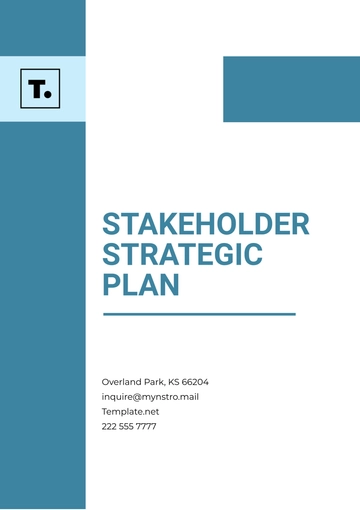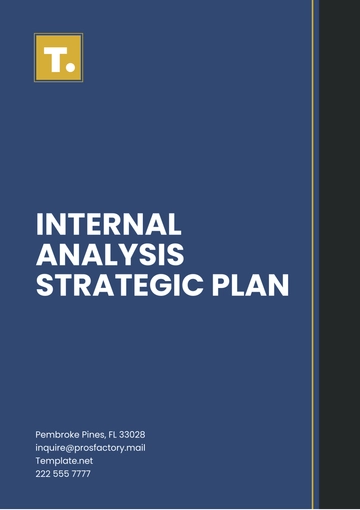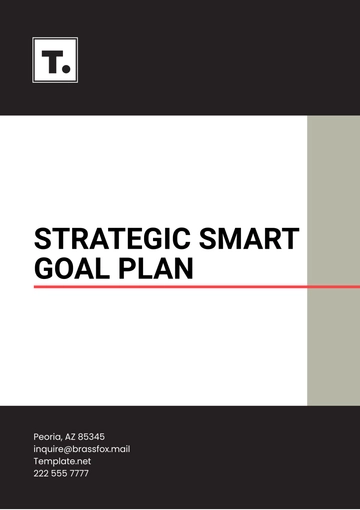Free SWOT Analysis Strategic Plan

Prepared by: [Your Name]
Company: [Your Company Name]
Date: April 9, 2050
I. Executive Summary
This SWOT Analysis Strategic Plan aims to provide a comprehensive evaluation of our organization’s current position as we enter the year 2050. By identifying strengths, weaknesses, opportunities, and threats, this analysis informs actionable strategies designed to enhance our market presence, improve operational efficiency, and ensure sustained growth in an evolving landscape. The insights derived from this analysis will guide our strategic direction, enabling us to adapt to market changes and consumer preferences while remaining competitive.
II. Introduction
The SWOT Analysis is a vital strategic planning tool that helps organizations assess their internal capabilities alongside the external environment. This document serves as a roadmap for identifying beneficial paths forward. By building upon our existing strengths, addressing our weaknesses, harnessing emerging opportunities, and countering potential threats, we can position ourselves for long-term success and adaptability in a rapidly changing world.
III. Strengths
A. Internal Resources
Highly Skilled Workforce: Our organization boasts a team of experts with diverse skill sets, fostering innovation and adaptability. Continuous professional development programs ensure our employees are equipped with the latest industry knowledge and technologies.
Strong Brand Reputation: We have established a reputable brand known for quality and reliability. This reputation facilitates customer trust and loyalty, providing us with a competitive edge in the market.
Robust Financial Position: Our solid financial foundation, marked by healthy cash flow and strong profitability, allows for strategic investments in growth initiatives and new technologies.
B. Competitive Advantage
Innovative Product Portfolio: Our commitment to research and development has resulted in a diverse range of innovative products that meet the evolving needs of our customers. We regularly solicit feedback to drive product improvement and diversification.
Advanced Technology and Infrastructure: Investment in state-of-the-art technology enhances our operational efficiency and enables us to deliver high-quality products. Our infrastructure supports the seamless integration of emerging technologies, such as AI and IoT.
Loyal Customer Base: We have cultivated a loyal customer base through exceptional customer service and engagement. Our customer retention strategies ensure repeat business and referrals.
IV. Weaknesses
A. Organizational Limitations
Over-dependence on Key Suppliers: Relying heavily on a limited number of suppliers can disrupt our supply chain. Diversifying our supplier network is essential to mitigate this risk.
Limited Global Presence: While we have a strong domestic market, our international presence is underdeveloped. Expanding into new geographic markets is crucial for long-term growth.
High Employee Turnover Rates: Frequent turnover disrupts operations and increases recruitment costs. Implementing robust employee engagement and retention programs is necessary to foster a stable workforce.
B. Financial Constraints
Fluctuating Profit Margins: Variability in profit margins due to market conditions necessitates careful financial management and cost control measures.
Insufficient Budget for R&D: Current budget constraints limit our ability to invest in research and development, hindering our competitive edge. Prioritizing R&D funding is vital for future innovation.
V. Opportunities
A. Market Trends
Growing Demand for Sustainable Products: Increasing consumer awareness regarding sustainability presents an opportunity to innovate and launch eco-friendly products. Positioning ourselves as a leader in sustainability can enhance our market share.
Expansion into Emerging Markets: Rapidly growing economies offer untapped markets for our products. Strategic market entry initiatives can facilitate our expansion and capture new customer segments.
B. Technological Advancements
Integration of AI and Automation: The rise of AI and automation can streamline operations and enhance customer experiences. Investing in these technologies will improve efficiency and reduce costs.
Development of E-commerce Platforms: Strengthening our online presence and e-commerce capabilities will cater to changing consumer preferences for online shopping, especially post-pandemic.
VI. Threats
A. Economic Factors
Market Volatility: Economic uncertainties, including inflation and market fluctuations, can impact sales and profitability. Developing a robust risk management framework will help us navigate these challenges.
Changing Regulatory Environment: Evolving regulations may impose new compliance costs and operational adjustments. Staying abreast of regulatory changes is essential to mitigate potential disruptions.
B. Competitive Pressure
Emerging Competitors with Lower Costs: New entrants into the market, particularly those offering lower-cost alternatives, pose a significant threat to our market share. Differentiating our products and services will be crucial to maintaining our competitive position.
Risk of Substitute Products: The emergence of substitute products can diminish demand for our offerings. Continuous innovation and value enhancement are necessary to counter this threat.
VII. Strategic Recommendations
A. Leveraging Strengths
Enhance Brand Outreach through Increased Marketing: Implement targeted marketing campaigns that highlight our strengths and sustainability initiatives. Utilizing digital platforms can increase brand visibility and engagement.
Continue Technology Advancements and Innovation: Allocate resources to R&D for ongoing product development and technological upgrades. Collaborating with tech firms can accelerate our innovation efforts.
B. Addressing Weaknesses
Diversify Supplier Base: Actively seek alternative suppliers to reduce dependency risks. Establishing strategic partnerships can enhance supply chain resilience.
Implement Employee Retention Programs: Develop comprehensive employee engagement initiatives, including career development, wellness programs, and competitive compensation packages to reduce turnover.
C. Capitalizing on Opportunities
Invest in Product Development for Sustainable Offerings: Create and market sustainable product lines that meet growing consumer demands. Aligning our offerings with sustainability trends can drive sales and improve brand reputation.
Explore Partnerships within Emerging Markets: Identify potential partnerships and joint ventures in emerging markets to facilitate entry and growth. Leveraging local expertise can enhance market penetration.
D. Defending Against Threats
Establish a Contingency Plan for Regulatory Changes: Develop proactive strategies to address potential regulatory shifts, including compliance training and risk assessments.
Focus on Differentiation Strategies: Emphasize unique selling propositions (USPs) that set our products apart from competitors. Strengthening customer relationships and loyalty programs will bolster our competitive advantage.
VIII. Conclusion
The SWOT Analysis has provided valuable insights necessary for strategic planning and decision-making as we move into 2050 and beyond. By aligning our strengths with market opportunities while addressing inherent weaknesses and shielding against threats, we can ensure the long-term success and sustainability of our organization. The proactive strategies outlined in this plan position us well to navigate the challenges and opportunities of the future, securing our place as a leader in our industry.
- 100% Customizable, free editor
- Access 1 Million+ Templates, photo’s & graphics
- Download or share as a template
- Click and replace photos, graphics, text, backgrounds
- Resize, crop, AI write & more
- Access advanced editor
Assess your organization’s strategic position with our SWOT Analysis Strategic Plan Template from Template.net. This customizable, editable template allows you to evaluate strengths, weaknesses, opportunities, and threats. Editable in our AI Editor Tool, you can tailor the SWOT analysis to reflect your business environment and develop actionable strategies. Ideal for businesses looking to refine their approach, this template provides a clear, structured framework for strategic planning.





























